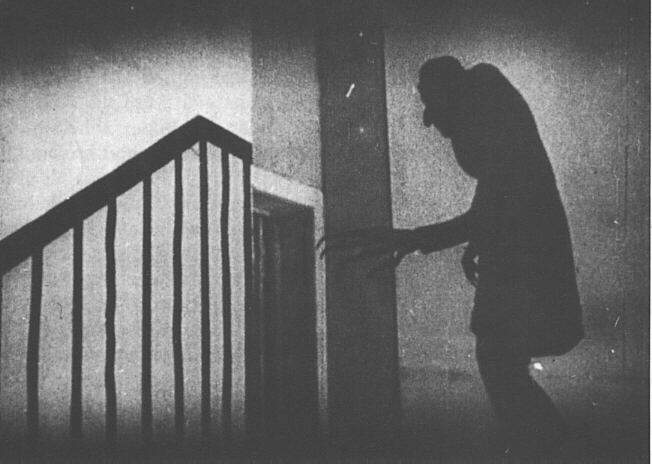Nosferatu
A classic film brings the world of German expressionism to gaunt and elongated life.
Overview
In many ways the world of Nosferatu speaks for itself. As soon as the screen is filled we're immersed in an unsteady shadowland of shifting angles and skulking menace. The origins of the film are less well-known. Pinned as the first vampire film in the history of cinema, director F.W. Murnau based his story off Bram Stoker's Dracula, changing the names and locations, since rights to the book were not granted. Despite Murnau's tactfulness, Stoker's widow sued and a court ordered that all copies of the film be destroyed. I mention this only because it's a fact that seems to imbue the film with all the more power, as though we're watching something that escaped history's protocol.
Simply put, Nosferatu is a tale of a monster in search of a throat, told through the lens of a German Expressionist. The story takes place in the fictitious city of Wisborg, where elongated and gaunt figures move, fall and are lured through an impossible world of dungeons, doors, coffins and dreams. Like other modernist movements, German Expressionism was one of several trends around the turn of the century that disposed of realism in search of a different version of the truth. Practitioners like Murnau favored distorting the external world in order to express an inner emotional state. This film characterises one of the great examples of this kind of storytelling, holding its own in the sea of schlocky lesbian vampire films and teenage-angst ridden TV-blood suckers.
The film is also screening at 2pm Wednesday 7 and Sunday 11 of September. Entry is free, but depending how crowded it is you may need to get tickets in advance. Nosferatu part of a series of films screening in conjunction with Mad Square: Modernity in German Art 1910-1937, an exhibition currently at the Art Gallery of New South Wales.





